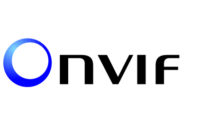 ONVIF announced the final release of Profile C, which extends the functionality of ONVIF’s global interface specification to the access control arena, as well as a new membership level, both aimed at increasing participation in the global standardization initiative for IP-based security products.
ONVIF announced the final release of Profile C, which extends the functionality of ONVIF’s global interface specification to the access control arena, as well as a new membership level, both aimed at increasing participation in the global standardization initiative for IP-based security products.
Now that the final release of Profile C, which includes the availability of the Profile C Test Tool, has been made available, the door is open for manufacturers to introduce conformant products to the market.
With Profile C, compatibility between access control edge devices and clients is improved, installation simplified and training time diminished because of the reduced need for multiple proprietary monitoring systems to handle different physical access control system (PACS) devices, according to the organization. Profile C conformant devices within the access control system provide door and access point information and functionality related to basic door control activities such as locking and unlocking doors, when a door has been accessed and other door monitoring tasks.
“Extending the ONVIF interface into other areas of physical security emphasizes ONVIF’s recognition that systems designers need a consistent interface to enable seamless integration within their security systems,” said Per Björkdahl, chairman of ONVIF’s Steering Committee. “With the release of Profile C for access control, integrators and specifiers can be confident that products bearing the Profile C mark will work together, ultimately enabling a better physical access control solution or integrated access and video system for their clients.”
Profile C also can be combined with ONVIF Profile S for video and audio streaming so users can group related access and video devices, sharing the same device management features such as network configuration and system settings. ONVIF introduced the profile concept to enable end users to more easily identify features supported by a profile without determining the compatibility between versions of the ONVIF specifications. In addition to Profile C for PACS, ONVIF offers Profile S as the interface to stream video and audio between conformant devices and clients, and Release Candidate Profile G, which will encompass video storage, searching, retrieval and playback.
In addition to the final release of Profile C, ONVIF also created an Observer level membership, which is available to consultants, systems architects and engineers, and members of the media. This new membership level grants certain benefits within ONVIF, most notably the opportunity to access Network Interface Specification test tools to gain greater familiarity with the ONVIF interface without participating at the same level as a manufacturer. Observer members will be able to independently test products to determine their conformance with ONVIF profiles to impartially evaluate various products.
“We recognize the importance of making ONVIF as inclusive as possible to those wishing to participate in the conformance verification process,” Bjorkdahl said. “Through the addition of this fourth membership level, we are granting more individuals access to ONVIF’s test tools and empowering them to independently authenticate Profile conformance on products they wish to present to their clients or readers.”
ONVIF currently has three other membership levels to accommodate individual levels of participation: user member, contributing member and full member. Full and contributing members can actively influence the development of the standard by participating in the work of the forum. The user member level is open to organizations who wish only to use the network interface specification and have access to specification proposals.
At present, there are more than 2,700 ONVIF-conformant products on the market from nearly 500 ONVIF member companies, covering Profile S for video and audio streaming; the recent release of Profile C for physical access control enables manufacturers to claim conformance for Profile C conformant products.



